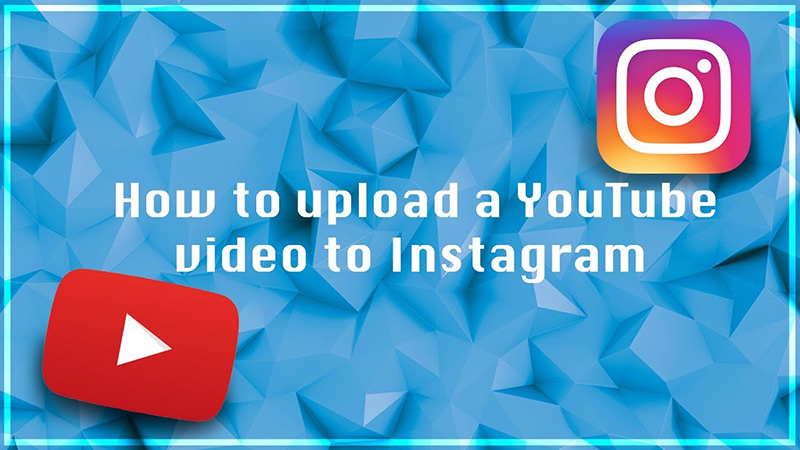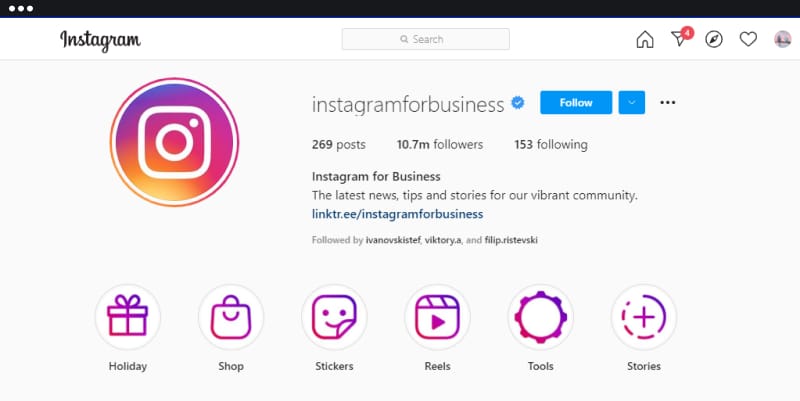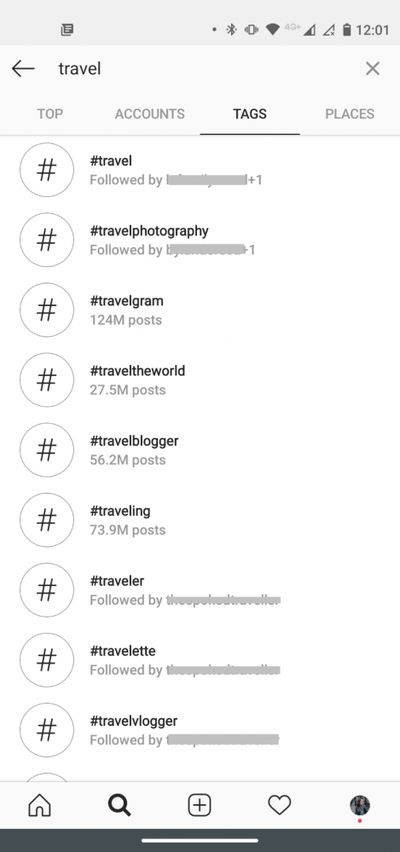Why Share YouTube Videos on Instagram?
Sharing YouTube videos on Instagram can be a highly effective way to increase engagement, reach, and brand awareness. With over 1 billion active users, Instagram offers a vast and diverse audience that can help expand your YouTube channel’s reach. By sharing your YouTube videos on Instagram, you can tap into this massive user base and drive traffic to your YouTube channel. Additionally, Instagram’s visual-centric platform can help you showcase your video content in a more engaging and immersive way, making it more likely to capture users’ attention and encourage sharing and engagement.
Moreover, sharing YouTube videos on Instagram can also help you leverage the strengths of both platforms. YouTube is ideal for long-form, in-depth content, while Instagram is better suited for shorter, more snackable content. By sharing your YouTube videos on Instagram, you can create a teaser or preview that drives users to your YouTube channel for more in-depth content. This can help you create a cohesive content strategy that leverages the strengths of both platforms and provides value to your audience.
Furthermore, sharing YouTube videos on Instagram can also help you increase your brand’s visibility and credibility. By showcasing your video content on multiple platforms, you can demonstrate your expertise and showcase your brand’s personality and values. This can help you build trust and credibility with your audience, which can ultimately drive more engagement, conversions, and sales.
Overall, sharing YouTube videos on Instagram is a simple yet effective way to increase engagement, reach, and brand awareness. By leveraging the strengths of both platforms, you can create a cohesive content strategy that provides value to your audience and drives real results for your brand. So, if you’re looking to take your content marketing to the next level, consider sharing your YouTube videos on Instagram today.
Preparing Your YouTube Video for Instagram
Before uploading your YouTube video to Instagram, it’s essential to optimize it for the platform’s unique format. Instagram is a visually-driven platform, and users are accustomed to consuming short-form, bite-sized content. To increase engagement and reach, you’ll want to ensure your YouTube video is tailored to Instagram’s specifications.
The ideal video length for Instagram is between 15 seconds to 60 seconds. If your YouTube video is longer than this, consider trimming it down to the most critical or engaging parts. You can use Instagram’s built-in editing features to trim and edit your video, or use a third-party editing app to make the process easier.
In addition to video length, you’ll also want to consider the format and content style of your video. Instagram is a mobile-first platform, so ensure your video is optimized for mobile devices. Use a 1:1 or 4:5 aspect ratio, and make sure your video is clear and concise. Avoid using too much text or complex graphics, as these can be difficult to read on smaller screens.
When editing your YouTube video for Instagram, consider the following tips:
- Use Instagram’s built-in editing features to trim and edit your video.
- Add text overlays or captions to provide context and make your video more engaging.
- Use Instagram’s music library to add background music to your video.
- Experiment with different filters and effects to enhance the visual appeal of your video.
By optimizing your YouTube video for Instagram’s unique format, you can increase engagement, reach, and brand awareness. Remember to keep your video short, concise, and visually appealing, and don’t be afraid to experiment with different editing features and techniques.
How to Upload a YouTube Video to Instagram
Uploading a YouTube video to Instagram is a straightforward process that can be completed in a few steps. Here’s a step-by-step guide on how to upload a YouTube video to Instagram:
Step 1: Download the YouTube Video
To upload a YouTube video to Instagram, you’ll need to download the video from YouTube first. You can do this by using a third-party video downloader or by using YouTube’s built-in download feature. Make sure to download the video in a format that is compatible with Instagram, such as MP4.
Step 2: Trim and Edit the Video
Once you’ve downloaded the video, you’ll need to trim and edit it to fit Instagram’s video length requirements. You can use Instagram’s built-in editing features to trim the video, or use a third-party editing app to make the process easier.
Step 3: Add Captions and Hashtags
After editing the video, you’ll need to add captions and hashtags to make it more discoverable on Instagram. You can add captions by typing in the text you want to appear on the video, and you can add hashtags by typing in relevant keywords.
Step 4: Upload the Video to Instagram
Once you’ve added captions and hashtags, you can upload the video to Instagram. To do this, open the Instagram app and tap the + icon to start a new post. Select the video you want to upload, and then tap the “Next” button.
Step 5: Choose Your Upload Options
After tapping the “Next” button, you’ll be taken to a screen where you can choose your upload options. You can choose to upload the video to your Instagram feed, or you can choose to upload it to your Instagram Stories or IGTV.
By following these steps, you can easily upload a YouTube video to Instagram and share it with your audience. Remember to optimize your video for Instagram’s unique format, and don’t forget to add captions and hashtags to make it more discoverable.
Using Instagram’s Built-in Features to Enhance Your Video
Instagram offers a range of built-in features that can help enhance your video and make it more engaging for your audience. By using these features, you can add an extra layer of creativity and visual appeal to your video, and make it stand out from the crowd.
One of the most popular features on Instagram is the filter. Instagram offers a range of filters that can be applied to your video, from subtle adjustments to bold and dramatic effects. You can use filters to add a touch of warmth or coolness to your video, or to create a specific mood or atmosphere.
In addition to filters, Instagram also offers a range of music tracks that can be added to your video. Music can help to set the tone and mood of your video, and can add an extra layer of emotional depth. You can choose from a range of genres and styles, from upbeat and energetic to slow and introspective.
Text overlays are another feature that can be used to enhance your video. Text overlays allow you to add text to your video, which can be used to provide context, add captions, or highlight important information. You can choose from a range of fonts, colors, and styles, and can adjust the size and position of the text to suit your needs.
Instagram also offers a range of other features that can be used to enhance your video, including stickers, GIFs, and polls. Stickers can be used to add a touch of fun and personality to your video, while GIFs can be used to add a dynamic and engaging element. Polls can be used to encourage engagement and interaction with your audience.
By using these features, you can create a video that is engaging, visually appealing, and effective at communicating your message. Remember to experiment with different features and techniques to find what works best for your brand and audience.
Adding Captions and Hashtags to Your Instagram Video
Adding captions and hashtags to your Instagram video is a crucial step in making it more discoverable and engaging for your audience. Captions provide context and help viewers understand the content of your video, while hashtags help your video reach a wider audience and attract new followers.
When writing captions for your Instagram video, keep the following tips in mind:
- Keep it concise: Instagram captions can be up to 2,200 characters, but it’s best to keep them short and sweet.
- Use keywords: Include relevant keywords in your caption to help your video appear in search results.
- Be creative: Use humor, emojis, and other creative elements to make your caption stand out.
Hashtags are also an essential part of making your Instagram video more discoverable. Here are some tips for using hashtags effectively:
- Use relevant hashtags: Choose hashtags that are relevant to the content of your video and your target audience.
- Use a mix of niche and broad hashtags: Using a mix of niche and broad hashtags can help you attract both targeted and wider audiences.
- Don’t overdo it: Use no more than 30 hashtags per post, as using too many can look spammy.
By adding captions and hashtags to your Instagram video, you can increase its discoverability, engagement, and reach. Remember to keep your captions concise and creative, and use relevant hashtags to attract new followers and grow your audience.
Sharing Your Instagram Video with Your Audience
Once you’ve uploaded your YouTube video to Instagram, it’s time to share it with your audience. There are several ways to share your Instagram video, including posting it on your feed, sharing it in Instagram Stories, and using Instagram’s features like IGTV and Reels.
Posting your video on your feed is a great way to share it with your followers. You can add a caption to your video, including relevant hashtags and tags, to help it reach a wider audience. You can also use Instagram’s built-in features, such as polls and quizzes, to make your video more engaging and interactive.
Instagram Stories is another great way to share your video with your audience. You can share your video as a story, and add text, drawings, and other effects to make it more engaging. You can also use Instagram’s “swipe-up” feature to drive traffic to your website or other social media channels.
IGTV is a feature on Instagram that allows you to upload longer-form videos. You can use IGTV to share more in-depth content, such as tutorials, interviews, and behind-the-scenes footage. IGTV videos can be up to 60 minutes long, making it a great way to share more detailed content with your audience.
Reels is a feature on Instagram that allows you to create short, engaging videos. You can use Reels to share quick tips, sneak peeks, and other bite-sized content. Reels videos can be up to 60 seconds long, making it a great way to share short, engaging content with your audience.
By sharing your Instagram video with your audience, you can increase engagement, reach, and brand awareness. Remember to use relevant hashtags and tags, and to engage with your audience by responding to comments and messages.
Tracking Your Instagram Video’s Performance
Once you’ve shared your Instagram video with your audience, it’s essential to track its performance to understand how it’s resonating with your audience. Instagram Insights provides a range of metrics that can help you understand your audience’s behavior and adjust your content strategy accordingly.
One of the most important metrics to track is views. This metric shows how many people have watched your video, and can help you understand whether your content is resonating with your audience. You can also track engagement metrics, such as likes, comments, and saves, to understand how your audience is interacting with your video.
Reach is another important metric to track. This metric shows how many people have seen your video, and can help you understand whether your content is reaching a wider audience. You can also track the average watch time, which shows how long people are watching your video, and can help you understand whether your content is engaging and holding people’s attention.
By tracking these metrics, you can gain a deeper understanding of your audience’s behavior and adjust your content strategy accordingly. For example, if you notice that your video is getting a lot of views but not a lot of engagement, you may want to consider adding more interactive elements, such as polls or quizzes, to encourage audience participation.
Instagram Insights also provides a range of other metrics that can help you understand your audience’s behavior, such as demographics, interests, and behaviors. By tracking these metrics, you can gain a deeper understanding of your audience and create content that resonates with them.
By tracking your Instagram video’s performance and adjusting your content strategy accordingly, you can increase engagement, reach, and brand awareness, and ultimately drive more traffic to your YouTube channel.
Common Mistakes to Avoid When Sharing YouTube Videos on Instagram
When sharing YouTube videos on Instagram, there are several common mistakes to avoid. These mistakes can negatively impact your video’s performance and engagement, and can even harm your brand’s reputation.
One of the most common mistakes is poor video quality. Instagram is a visually-driven platform, and users expect high-quality content. If your video is poorly lit, has low sound quality, or is otherwise unprofessional, it may not perform well on Instagram.
Another mistake is incorrect formatting. Instagram has specific formatting requirements for videos, including aspect ratio and resolution. If your video is not formatted correctly, it may not display properly on Instagram, which can negatively impact engagement and views.
Neglecting to engage with your audience is also a common mistake. Instagram is a social platform, and users expect to interact with the content they consume. If you don’t respond to comments and messages, or don’t use Instagram’s features like polls and quizzes, you may miss out on opportunities to engage with your audience and build your brand.
Finally, not optimizing your video for Instagram’s algorithm is a mistake. Instagram’s algorithm prioritizes content that is engaging, relevant, and timely. If you don’t optimize your video for the algorithm, it may not perform well, even if it’s high-quality and engaging.
By avoiding these common mistakes, you can optimize your video sharing strategy and increase engagement, reach, and brand awareness on Instagram. Remember to always prioritize high-quality content, engage with your audience, and optimize your video for Instagram’s algorithm.






